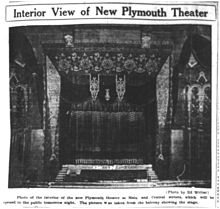
The DCU Center is an indoor arena and convention center complex in downtown Worcester, Massachusetts. The facility hosts a variety of events, including concerts, sporting events, family shows, conventions, trade-shows and meetings. It is owned by the City of Worcester and managed by SMG, a private management firm for public assembly facilities.
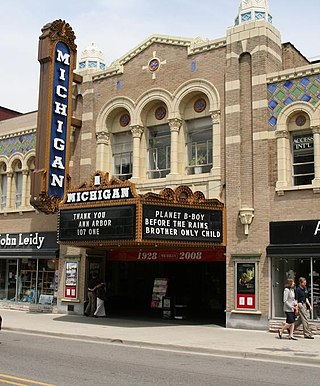
The Michigan Theater is a movie palace in Ann Arbor, Michigan, United States, near the Central Campus of the University of Michigan. It shows independent films and stage productions, and hosts musical concerts.
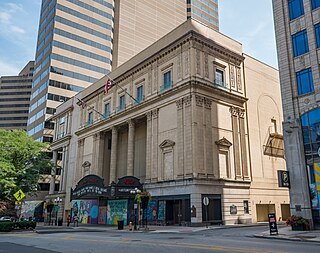
The Ohio Theatre is a performing arts center and former movie palace on Capitol Square in Downtown Columbus, Ohio. Known as the "Official Theatre of the State of Ohio", the 1928 building was saved from demolition in 1969 and was later completely restored. The theater was declared a National Historic Landmark in 1977 as one of the nation's finest surviving grand theaters.

The Pellissier Building and adjoining Wiltern Theatre is a 12-story, 155-foot (47 m) Art Deco landmark at the corner of Wilshire Boulevard and Western Avenue in Los Angeles, California. The entire complex is commonly referred to as the Wiltern Center. Clad in a blue-green glazed architectural terra-cotta tile and situated diagonal to the street corner, the complex is considered one of the finest examples of Art Deco architecture in the United States. The Wiltern building is owned privately, and the Wiltern Theatre is operated by Live Nation's Los Angeles division.
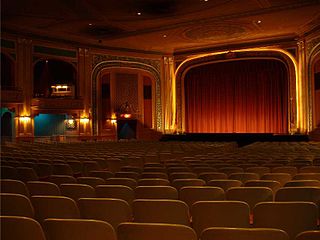
The Lafayette Theatre is a nationally acclaimed movie palace located in downtown Suffern, New York, built in 1923. Its primary function is first-run movies, but it also houses special events like its popular weekly Big Screen Classics film shows. It is also notable for housing a Wurlitzer theatre organ, which is played before Big Screen Classics shows.

The Roxy Theatre was a 5,920-seat movie palace at 153 West 50th Street between 6th and 7th Avenues, just off Times Square in New York City. It was the largest movie theater ever built at the time of its construction in 1927. It opened on March 11, 1927 with the silent film The Love of Sunya starring Gloria Swanson. It was a leading Broadway film showcase through the 1950s and also noted for its lavish stage shows. It closed and was demolished in 1960.

The Orpheum Theatre, a 2,308-seat venue listed on the National Register of Historic Places, is located in downtown Memphis, Tennessee, on the southwest corner of the intersection of South Main and Beale streets. The Orpheum, along with the Halloran Centre for Performing Arts & Education, compose the Orpheum Theatre Group, a community-supported nonprofit corporation that operates and maintains the venues and presents education programs.

The Boston Music Hall was a concert hall located on Winter Street in Boston, Massachusetts, with an additional entrance on Hamilton Place.

The Redford Theatre is an atmospheric theatre in the Old Redford neighborhood of Detroit. The theatre opened in January 1928, advertised as "Detroit's most unique suburban theatre," due to its grand design, featuring Japanese and Chinese motifs.

An atmospheric theatre is a type of movie palace design which was popular in the late 1920s. Atmospheric theatres were designed and decorated to evoke the feeling of a particular time and place for patrons, through the use of projectors, architectural elements and ornamentation that evoked a sense of being outdoors. This was intended to make the patron a more active participant in the setting.

The Victoria Theatre is a historic 1,154-seat performing arts venue located in downtown Dayton, Ohio. The Victoria hosts a variety of events including theatre, music, dance, film, and comedy.

The Robert Morton Organ Company was an American producer of theater pipe organs and church organs, located in Van Nuys, California. Robert Morton was the number two volume producer of theatre organs, building approximately half as many organs as the industry leader Wurlitzer. The name Robert Morton was derived not from any person in the company, but rather from the name of company president Harold J. Werner's son, Robert Morton Werner.

Temple Emanuel Sinai is a medium-sized Reform (progressive) Jewish synagogue located in Worcester, Massachusetts, New England's second largest city.

Worcester Memorial Auditorium is a multi-purpose arena located at Lincoln Square in Worcester, Massachusetts. It was built in 1933 to honor the sacrifices of Worcester citizens during times of war. The building includes a multi-purpose auditorium originally designed to seat 3,500–4,500 people, a smaller entertainment space known as the Little Theater designed to seat 675, and the Shrine of the Immortal, a war memorial with murals by renowned artist Leon Kroll commemorating the 355 soldiers and nurses from Worcester who fell during World War I. The Aud was added to the National Register of Historic Places in 1980 as part of the Institutional District. In 2009, Preservation Massachusetts included Lincoln Square on its "Most Endangered Historic Resources" list, because the square's three historic buildings – the Aud, the old Worcester County Courthouse, and the Lincoln Square Boys Club – were all empty or underutilized.
Aberdeen has been the host of several theatres and concert halls through history. Some of them have been converted or destroyed over the years.
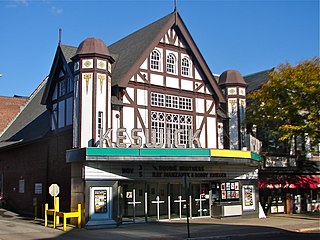
The Keswick Theatre is a privately owned theater in the Keswick Village section of Glenside, Pennsylvania, a suburb of Philadelphia. Horace Trumbauer designed the exterior in the Tudor Revival Style, which has remained essentially unaltered. When opened it had 1,366 seats.

The Jewish Healthcare Center is a nursing home and rehabilitation hospital at 629 Salisbury Street in Worcester, Massachusetts. The JHC services 2,500 clients per year, 70 percent of whom are not Jewish.

Kevin O'Sullivan is an American non-profit executive and politician who served as president and CEO of Massachusetts Biomedical Initiatives from 2003 to 2018 and represented the 13th Worcester District in the Massachusetts House of Representatives from 1987 to 1995.
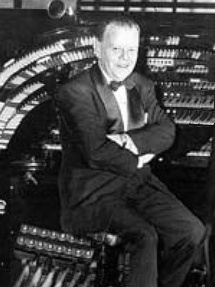
Richard William "Dick" Leibert was an American musician who was the chief organist at New York City's Radio City Music Hall between 1932 and 1971. He also had a radio program of organ music on the NBC Radio Network in the 1930s and 1940s, along with making phonograph recordings on the RCA Victor and Westminster Records labels.

The Senate Theater is a theater in Detroit, Michigan, known for its "Mighty Wurlitzer" pipe organ, originally installed at the Fisher Theater. The Senate opened in 1926, deteriorated substantially after its closure in the 1950s, and reopened in 1964 under the ownership and volunteer operation of the Detroit Theatre Organ Society. The Senate continues to present organ performances, classic films, and private events.



